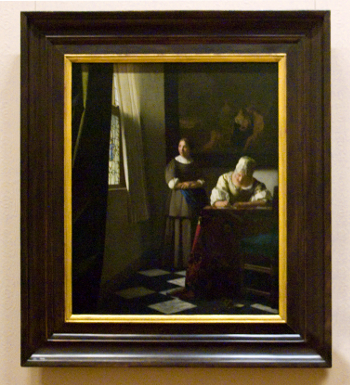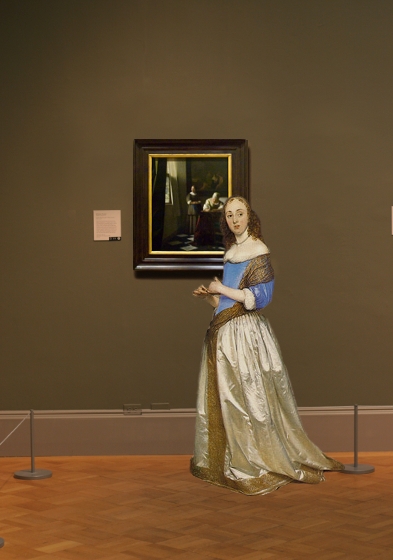Lady Writing a Letter with her Maid
(Schrijvende vrouw met dienstbode)c. 1670–1671
Oil on canvas, 71.1 x 58.4 cm. (28 x 23 in.)
National Gallery of Ireland, Dublin
inv. NGI.4535

The textual material contained in the Essential Vermeer Interactive Catalogue would fill a hefty-sized book, and is enhanced by more than 1,000 corollary images. In order to use the catalogue most advantageously:
1. Scroll your mouse over the painting to a point of particular interest. Relative information and images will slide into the box located to the right of the painting. To fix and scroll the slide-in information, single click on area of interest. To release the slide-in information, single-click the "dismiss" buttton and continue exploring.
2. To access Special Topics and Fact Sheet information and accessory images, single-click any list item. To release slide-in information, click on any list item and continue exploring.
The green curtain
This green curtain functions as a familiar pictorial device known as repoussoir. The term repoussoir originates from a French verb meaning to push back. It serves as a technique to create spatial contrast and depth by positioning a prominent figure or object at the immediate foreground of a painting's composition. Repoussoir motifs offer a dramatic entry point for the painting and heighten the viewer's perception of scale. Caravaggio earned renown for his paintings of everyday people and religious subjects set within repoussoir compositions. In Claude Lorraine's classical landscapes, the repoussoir feature typically manifested as a large, dimly lit tree positioned in the left foreground. The Utrecht Caravaggist School often employed human figures in the role of repoussoir.
In Vermeer's interiors, various repoussoir curtains are situated in the foreground, positioned between the first and second window of the artist's studio. These curtains, slightly shifted to the left and modestly gathered at the bottom, resemble a stage with its curtain partially pulled back, evoking a transient feeling of anticipation in which the viewer is subtly encouraged to engage.
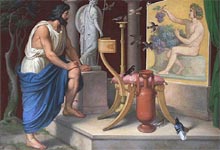
A mural representing Parrhasius and Zeuxis
in the Gallery of the History of Ancient
Painting in the Hermitage.
The concept of the repoussoir curtain boasts distinguished roots that would have been recognized by any well-informed Dutch painter. According to the Naturalis Historia by Pliny the Elder, Zeuxis and his contemporary Parrhasius, from Ephesus and later Athens, once engaged in a competition to identify the superior artist. Upon unveiling his painting of grapes, Zeuxis was greeted with birds descending from the skies, lured by the illusion of real fruit. However, when Zeuxis prompted Parrhasius to draw back the curtain of his artwork, it was revealed that the curtain was the art itself, leading to Zeuxis's admission of defeat. It's whispered that Zeuxis remarked, "I have deceived the birds, but Parrhasius has deceived Zeuxis."
The painting of the Finding of Moses on the background wall
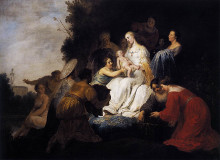
Finding of Moses
Pieter de Grebber
1634
Oil on canvas, 170 x 229 cm.
Gemäldegalerie, Dresden
TIn Vermeer's rendition, the figures have been significantly schematized, mirroring the technique he employed for pictures-within-pictures in his other creations. Interestingly, the same Moses is present in The Astronomer, but it is much smaller in size. This should serve as a reminder to the contemporary observer that in observing a Vermeer, one does not see a direct reflection of 17th-century life, but a meticulously arranged composition blending the factual with the imaginative.
Biblical scenes were often interpreted allegorically, providing insights into the intricate designs of divine will. This particular scene (Exodus 2:1 – 10) captures the moment when the Egyptian Pharaoh's daughter and her maids come across a Hebrew infant in a basket amidst the marshes. To shield him from Pharaoh's decree of death to all male Hebrew infants, his mother concealed him. The Pharaoh's daughter rescues and names him Moses. This tale was frequently seen as a testament to divine intervention and God's capability to reconcile opposing parties.
This Finding of Mosesin the present work undoubtedly has much to do with the scene that is being acted out by the two Dutch women below it even though critics are hardly in agreement just what Vermeer had intended to say.
Peter Sutton notes that this biblical narrative, further elaborated by Flavius Josephus in his popular Jewish Antiquities, inspired Dutch history painters. They perceived the narrative as testamentary of Divine Providence and a demonstration of God's prowess in uniting opposing entities.
Art historian Lisa Vergara perceives thematic parallels between the biblical females and those in Vermeer's composition. She suggests that the Pharaoh's daughter, celebrated for her empathy, nobility and independence, partly serves to depict Dutch women of the time. The poised posture of the standing maid finds its echo in the solitary standing figure in the biblical scene, presumably representing Moses' "sister." The audience of the era might have discerned a thematic link since Moses' sister is positioned as a messenger, much like the writer's maid in the painting.
The demure maid
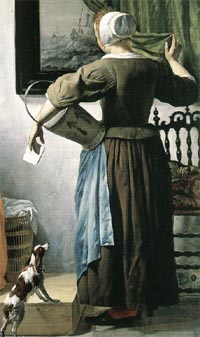
Woman Reading a Letter (detail)
Gabriel Metsu
1662–1665
Oil on canvas, 53 x 40 cm.
National Gallery of Ireland, Dublin
Behind the seated woman is a maidservant dressed in a muted gray ensemble complemented by a blue apron. This poised, columnar figure, arms folded across her chest, peers out the window, waithing for her mistress to finish her letter. While the mistress seems absorbed in her task, the maid projects an aura of composed patience, evident in her folded arms and her central positon within the composition.
The depiction of the maid may draw inspiration from a similar-themed piece by fellow genre painter Gabriel Metsu. In Metsu's rendition, the maid has her back turned to the viewer, momentarily preoccupied as her mistress engages with a letter. Despite the differing poses, the attire and roles of the maid are strikingly akin in both pieces.
Vermeer, on several occasions, played with the notion of challenging the conventional hierarchies of figures' societal standings in his paintings. Here, the maidservant, despite belonging to a lower social stratum, occupies the painting's exact center, elevated above her mistress.
While emblematic and widely read literature often portrayed maids as potential jeopardies to domestic tranquility, Dutch genre paintings occasionally depicted them in more benign roles: diligently attending to chores, looking after children, or being overseen by the household's matriarch. In this instance, Vermeer represents the maid neutrally but grants her a pivotal role in the tableau. Her contemplative gaze, leaving viewers to interpret her inner musings, magnifies the engrossment of her mistress in her writing.
The Turkish carpet on the table
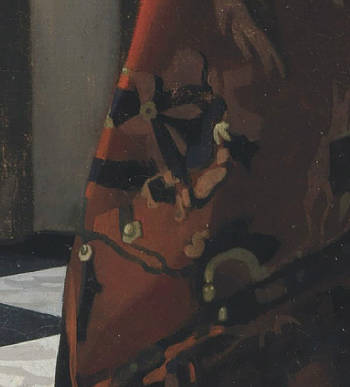
Among the numerous carpets depicted in Vermeer's oeuvre, this particular one stands out for its abstract representation. The ornate patterns have been simplified to a form of calligraphic shorthand, and the intricately detailed texture, which was meticulously rendered in The Music Lesson, is now entirely replaced by flat, unvarying patches of paint. The artist's decision to adopt a lower viewpoint in this piece diminishes the prominence of the expansive carpet-covered table, thereby directing the viewer's primary focus to the figure of the letter-writer.
The young letter-writing mistress

Although the features of the young mistress' face have been strongly stylized, the spectator can nonetheless intuit her rapt attention as she bends over her missive, hands joined for writing. She dons a lovely starch-white cap, whose lacework is only hinted at, a smart green bodice with puffy white sleeves, and a discreet jeweled brooch, an unusual accessory for Vermeer.
The artist was able to accent the mistress' importance in respects to the standing maid by placing the perspective's vanishing point on the left eye of the mistress herself. Although relegated to the farthest right-hand side of the composition, her material presence is emphasized by contrasting her right-hand silhouette with a patch of bright white wall behind her, which, however, appears illogically fully lit considering the illumination of the rest of the room. The razor-sharp planes that define her billowing blouse seem, as Arthur K. Wheelock Jr. put it, "to suggest the acuity of her emotional state."
The pose of the seated mistress seems to draw inspiration from The Lacemaker (see left, the detail has been reversed to facilitate comparison) and in both pictures the women's anatomical features have been abbreviated with surprising economy.
The letter & the stick of sealing wax thrown on the floor
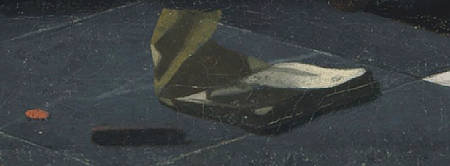
This minor detail animates the scene and enhances its meaning. It contains a letter, a stick of sealing wax, a bright red seal and an object that has been interpreted alternatively as a small book or, more likely, a letter with its wrapper crumpled. If it is a letter, it may be one that the lady has received or an unsatisfactory draft. If the letter is not her own, the fact that it has been cast to the floor suggests that its content was disturbing.
Letters were considered precious items in 17th-century Netherlands. They were sometimes enclosed in cloth or pape—the envelope as we know it was not yet in use in the 17th century—but usually were simply folded, sealed with wax, addressed and sometimes secured with twine. In either case, the fact that the letter and postal instruments have been cast to the floor of the otherwise impeccable interior implies a state of some agitation that belies the calm atmosphere of the interior.
The foreground chair
Chairs, which were uncommon in lower- and middle-class households until the Renaissance, frequently appear in many Dutch paintings. Some critics have hypothesized that the empty chairs in Vermeer's paintings might allude to an absent person, possibly a suitor or loved one. While this interpretation is not supported by any period writings on genre painting, it's notable that chairs were typically placed flat against walls when not in use. Therefore, its oblique position near the table in this painting might serve a narrative purpose.
In the current work, the presence of the free-standing chair and the objects carelessly strewn on the floor suggest recent activity. Otherwise, the attentive maid would have surely restored them to their proper places.
The leaded window

The Music Lesson (detail)
Johannes Vermeer
c. 1662–1665
Oil on canvas, 73.3 x 64.5 cm.
The Royal Collection, The Windsor Castle
The economy of the means by which Vermeer represents reality in his late works has reached an apex in the present work. The observed world has been purged of extraneous detail to make evident only the core theme and composition. By according the utmost pictorial weight to every element the spectator is subliminally lead to believe that he is witnessing an event of great import instead of a minor incident of an individual's life.
The leadings of the window seem to be identical in design to those seen in the earlier Music Lesson, but in the present picture the central design has been colored. No one has been able to make out a figural meaning of the motif and, perhaps, rather than a result of observed reality, the blank glass was colored so that it might bond the relatively empty left-hand side of the painting to that of the right.
The Dutch were pioneers in developing large windows. This was due to the Dutch urban architectural style where houses were tall and slender and the need for maximum light.
The production of window glass in the 17th century Netherlands was based on the "cylinder blown sheet" method, in which a large amount of molten glass was collected on a blowpipe and blown into a cylindrical shape. After being cut and flattened, it became a flat sheet. The glass panes were held together with lead strips, forming a network. These lead strips were necessary because the technology of the time did not allow for the creation of large single panes of glass. Hence, smaller panes were put together with lead to create a larger window. This process, however, allowed for intricate and decorative designs.
The Dutch term for the lead strips or leading in windows is "lood".
The transparent curtain
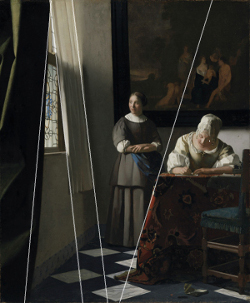
The transparent hanging curtain intensifies the sense of hushed privacy, unmatched in any of Vermeer's other multi-figure works. While some incidental details are intentionally omitted, the curtain's drape and transparency are depicted with remarkable precision through tonal variations. In the homes of the affluent windows were adorned with curtains not just for privacy but also as a way to modulate light.
From a compositional standpoint, the curtain forms one of three pronounced diagonal lines, adding dynamism to the piece and offsetting its otherwise strict, rectilinear layout.
The black & white floor tiles
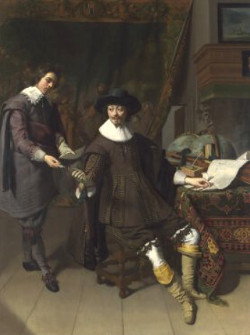
Constantijn Huygens and his Clerk
Thomas de Keyser
1627
Oil on panel, 92.4 x 69.3 cm.
National Gallery, London
The black and white marble floor depicted in the current painting signifies an extraordinary setting. Such floors were typically found in esteemed public buildings or in the main reception areas of affluent homes, aimed to impress visitors. The Netherlands lacks natural marble reserves, making it an expensive import and a challenge to work with. Dutch artists, including Vermeer, likely exaggerated the prevalence and diversity of these floors in their paintings, portraying an idealized vision of bourgeois life. Vermeer's composition presents a carefully crafted ideal, akin to today's interior design magazine ads designed to captivate and inspire readers.
Most affluent individuals actually favored large wooden plank floors, which offered some warmth during the chilly Dutch winters. For instance, the image to the left portrays Constantijn Huygens, a prominent cultural figure in the Netherlands, in his lavish The Hague palace, attended by a servant. Notable luxury symbols surround him, such as a rich tapestry bearing his coat of arms and various other opulent objects. However, the floor is unmistakably made of simple wooden planks.
Through a technique termed reversed geometry, London architect Philip Steadman demonstrated that the floor tiles in Vermeer's works are consistently the same size, only varying in pattern.
The Delft tiles

Vermeer subtly pays homage to his cherished Delft through the inclusion of a row of locally-crafted floor tiles in his work. Originating from Delft, these distinct tiles, hand-embellished with children's games or whimsical designs, were a product of the renowned Delft faience industry for many years. Their primary functions included shielding the lower parts of walls from the regular wear and tear of mops and brooms, gracing fireplaces and guarding walls against dampness. While these tiles frequently appeared in the works of Vermeer's contemporaries, only he granted them such esteem.
The Delft artisans produced these tiles in staggering quantities, estimated at a whopping eight hundred million, spanning two centuries. Some homes in the Netherlands have conserved tiles installed during the 17th and 18th centuries. Interestingly, these tiles were also employed as ship ballast on lengthy treks to the East and could later be traded profitably upon arrival.
Identifying markers were seldom found on these unassuming tiles. The dating of extant Delft blue tiles primarily relies on company records, the construction date of the building where they were found and their distinct designs. Variations in tile size and thickness can also offer clues. Notably, the Nederlands Tegelmuseum in Otterlo, near Arnhem, boasts the most extensive photographic collection, comprising a staggering 70,000 images.
special topics
fact sheet
- Signature
- Date
- Provenance
- Exhibitions
- Technical description
- Framed image
- How big is this picture?
- Historic timeline of the year(s) Vermeer created this painting
- Download High-Resolution Image from WikiMedia
- Google Art Project Super-zoom image
- Historic timeline of the year(s) Vermeer created this painting
- Related artworks
The signature
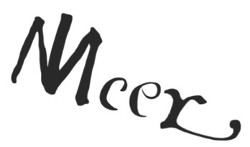
Signed on the table, under the hand of the writing lady.
(Click here to access a complete study of Vermeer's signatures.)
Dates
1671
Albert Blankert, Vermeer: 1632–1675, 1975
c. 1670
Arthur K. Wheelock Jr., The Public and the Private in the Age of Vermeer, London, 2000
c. 1670–1671
Walter Liedtke, Vermeer: The Complete Paintings, New York, 2008
c. 1670–671
Wayne Franits, Vermeer, 2015
(Click here to access a complete study of the dates of Vermeer's paintings).
Technical report
The support is a plain weave linen canvas with a thread count of 14 x 14 per cm². The canvas has been lined and the original tacking edges have been removed, Strainer bar marks 2.6 cm. long from the folded edge can be seen on the top, bottom and right edges. The lesser degree of cusping on the left side, together with the lack of strainer marks, may indicate that the canvas has been cut down on this side.
The ground, a warm buff gray visible on the window frame where the lead casts shadows,: along a few contours in the figures, and in places along the shadowed edge of the carpet.
The carpet is very sketchy and appears almost unfinished: instead of the soft transitions, bright blocks of color have been placed next to each other. The lady's white sleeve was painted wet-in-wet. Incised lines were used to define the tiled floors; the trailing corner of the carpet can be seen to flow into these lines. A dent in the paint in the lady's left eye marks the vanishing point of the composition. The background paint overlaps the maid's blue apron. The edge of the lower part of the green curtain appears to have been slightly further to the left.
* Johannes Vermeer (exh. cat., National Gallery of Art and Royal Cabinet of Paintings Mauritshuis - Washington and The Hague, 1995, edited by Arthur K. Wheelock Jr.)
Provenance
- The artist's widow, Catharina Bolnes (1675–1676);
- on 27 January, 1676, together with another painting as security for a dept to Van Buyten;
- Hendrick van Buyten, Delft (1676–d.1701);
- Josua van Belle, Rotterdam (before d.1710);
- his widow, Ida Catharina van der Meyden, Rotterdam (1710–1729);
- Van Belle sale, Rotterdam, 6 September, 1730, no. 92;
- Franco van Bleyswijck, Delft (d.1734);
- inherited by Catharina van der Burch (wife of Hendrick van Slingelandt), The Hague (1734–1761);
- Heirs Van Slingelandt, The Hague (1761);
- Maria Catharina van Slingelandt, The Hague (1761–1771), or Agatha van Slingelandt, The Hague (1761–1775);
- (?) Barthout van Slingelandt, Dordrecht (1771–1798) or Willem Bentinck, The Hague (1775–1798);
- Viktor von Miller zu Aichholz, Vienna (before 1881, sold to Sedelmeyer);
- [Charles Sedelmeyer, Paris, sold in 1881 to Secrétan];
- E. Secrétan, Paris (1881–1889);
- Secrétan sale, Paris, 1 July, 1889, no. 140 (to Boussod, Valadon & Co.);
- Collection Marinoni, Paris;
- [Kleinberger, Paris];
- Alfred Beit, London (c. 1895–1906);
- Sir Otto Beit, Baronet, London (1906–1930);
- Sir Alfred Beit, 2nd Baronet, London and (from 1952) Russborough, near Dublin (1930–1987, stolen in 1974 and 1986);
- The National Gallery of Ireland (bequeathed by Beit in 1987; the painting was recovered in 1993).
Exhibitions
- Paris 1898
Illustrated catalogue of 300 Paintings by Old Masters of Dutch, Flemish, French and English School Being Some of the Principal Pictures Which Have at Various Times Formed Part of Sedelmeyer Gallery
Sedelmeyer Gallery
102, no. 86 and ill., as "The Billet-doux " - Paris 1914
Hundred Masterpieces: A Selection from the Pictures by Old Masters
Sedelmeyer Gallery
48, no. 22 and ill. - London January 4–March 9, 1929
Exhibition of Dutch Art, 1450–1900
Royal Academy of Arts
148–149, no. 314, as "The Love-Letter" - London 1929
Dutch Art. An Illustrated Souvenir of the Exhibition of Dutch Art at Burlington House, London
Burlington House
88, no. 106 and ill., As "The Letter" - Rotterdam July 9–October 9, 1935
Vermeer, oorsprong en invloed. Fabritius, de Hooch, de Witte
Museum Boijmans Van Beuningen
35–36, no. 82 and ill. - Amsterdam October 21–November 3, 1935
Vermeer tentoonstelling ter herdenking van de plechtige opening van het Rijksmuseum op 13 July, 1885
Rijksmuseum
28, no. 164 - London 1938
Exhibition of the King's Pictures
Royal Academy of Arts
1: 106, no. 253, as "The Love Letter," 2: 62 and ill. 253 - Cape Town 1949
Skilderye van ou Meesters uit de Beit-Versameling
Nationale Kunstmuseum
2 and 13, no. 35 - New York 1954
Dutch Painting: The Golden Age: An Exhibition of Dutch Pictures of Seventeenth Century
The Metropolitan Museum of Art
no. 111 - Toronto 1954–1955
Dutch Painting: The Golden Age. An Exhibition of Dutch Pitcures of Seventeenth Century
Art Gallery of Toronto
86 and ill. - Toledo (OH) January 2–February 13, 1955
Dutch Painting: The Golden Age. An Exhibition of Dutch Pictures of Seventeenth Century
Toledo Museum of Art
86 and ill. - The Hague 25 June–5 September, 1966
In het licht van Vermeer
Mauritshuis
no. x and ill. - Paris September 24–November 28, 1966
Dans la lumière de Vermeer
Musée de l'Orangerie
no. XI and ill. - Washington D.C. November 12, 1995–February 11, 1996
Johannes Vermeer
National Gallery of Art
186–189, no. 19 and ill. - The Hague March 1–June 2, 1996
Johannes Vermeer
National Gallery of Art
186–189, no. 19 and ill. - Dublin October 1–December 31, 2003
Love Letters: Dutch Genre Painting in the Age of Vermeer
National Gallery of Ireland
no. 39, fig. 59 and ill. 187 - Greenwich (CT) 30 January, 2004–1 May, 2004
Love Letters: Dutch Genre Paintings in the Age of Vermeer
Bruce Museum of Arts and Science
no. 39, fig. 59, repro 187 and ill. - Kyoto 25 June–16 October, 2011
Communication: Visualizing Human Connection in the Age of Vermeer
Municipal Museum of Art
132, no. 43 and ill. - Sendai 27 October, 2011–12 December, 2011
Communication: Visualizing Human Connection in the Age of Vermeer
Miyagi Museum of Art
132, no. 43 and ill. - Tokyo 23 December–14 March, 2012
Communication: Visualizing Human Connection in the Age of Vermeer
The Bunkamura Museum of Art
132, no. 43 and ill. - Frankfurt 7 October, 2015–24 January, 2016
Masterworks in Dialogue: Eminent Guests for the Anniversary
Städel Museum - Paris February 20–May 22, 2017
Vermeer and the Masters of Genre Painting: Inspiration and Rivalry
Musée du Louvre - Dublin June 17–September 17, 2017
Vermeer and the Masters of Genre Painting: Inspiration and Rivalry
National Gallery of Ireland - Washington D.C. October 22, 2017–January 21, 2018
Vermeer and the Masters of Genre Painting: Inspiration and Rivalry
National Gallery of Art - Amsterdam February 10– June 4, 2023
VERMEER
Rijksmuseum
no. 35 and ill. - Dublin May 11, 2024–August 18, 2024
Vermeer Visits
National Gallery of Ireland, Dublin
(Click here to access a complete, sortable list of the exhibitions of Vermeer's paintings).
Dutch maids
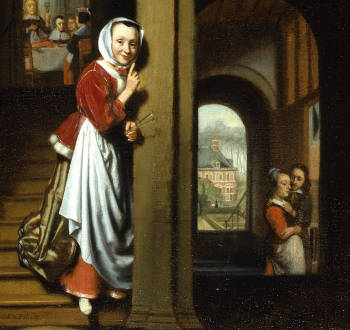
The Eavesdropper (detail)
Nicholaes Maes
1657
Oil on canvas, 92 x 121 cm.
Dordrecht Museum, Dordrecht
Maids, often viewed as a necessary evil, were frequently the subjects of popular literature and plays. They were known to speak their minds to their masters and mistresses and were often depicted as untrustworthy, making them seemingly the most perilous of all women. However, their frequent portrayal in family portraits suggests that some maids integrated well into the family unit, which was foundational in Dutch society. In Vermeer's paintings, most maids are depicted with a neutral demeanor. However, The Milkmaid stands out as a particularly compassionate portrayal of this role in Dutch art. It's come to symbolize the domestic virtue and the broader moral value of the diligent Dutch society.
As Wayne Franits highlighted, the inclusion of the maid in Vermeer's paintings—in total, maids appear three times in Vermeer's compositions, all in his later work.—isn't just a random choice. In both popular literature and theater, as well as genre painting, servants often played crucial roles as confidants in their mistresses' and masters' romantic endeavors. Indeed, many courtship guides of the time recommended using servants as intermediaries, particularly for delivering love letters.
Servants, predominantly female, constituted about six percent of the Dutch population. Between ten to twenty percent of households employed them. Their significance was underscored by some towns even enacting regulations to resolve disputes between masters and their domestic help. For instance, a servant with good references couldn't be dismissed before the tenure of their original contract, typically six months, had elapsed.
One documented story is of Grietje, a young maid who worked for a wealthy merchant family in Amsterdam. Her diary reveals glimpses of her daily life, weaving a tale of both hardship and unexpected joys. She wrote about the occasional gifts she received from her mistress, especially after a hard day's work, and the times she was unfairly reprimanded for minor mistakes. Grietje's account paints a picture of a life balanced on the fine line between servitude and familial affection.
There's also a story from a letter exchange between Johannes, a young master and Anna, his family's maid. Their correspondence, discovered tucked away in an attic in Utrecht, unveils an illicit romantic relationship. Johannes frequently expressed concern about societal judgment, while Anna wrote of her dreams for a life beyond service.
Dutch cleanliness
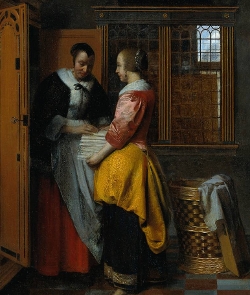
At the Linen Closet (detail)
Pieter de Hooch
1665
Oil on canvas, 72 x 77.5 cm.
Rijksmuseum, Amsterdam
The Dutch word for "clean," schoon, also means "beautiful," a fact that often amuses those aware of the impeccable cleanliness of Dutch homes. During Vermeer's era, visitors consistently remarked on the pristine conditions of Dutch towns, which were diligently swept, scrubbed, burnished, mopped and washed. An English visitor once noted, "The streets' beauty and cleanliness are so remarkable that people of all ranks seem to enjoy walking in them."
Household cleanliness in the Netherlands was pursued with an almost military precision. A prominent household manual of the time detailed a weekly cleaning routine, emphasizing its adherence almost as a religious rite. The regimen was strict: every weekend morning involved cleaning the house steps; Wednesdays were for thorough house cleaning; Tuesdays for dusting; Thursdays for scrubbing; and Fridays for tending to the cellar and kitchen.
While 15th and 16th-century Italian writers showed increasing interest in personal hygiene, it largely remained a concern for the upper classes. The common citizens, especially the poor and peasants, were often disregarded or contrasted negatively with the elite, the latter often portrayed as the epitome of cleanliness. In Holland, however, this cleanliness ethic extended beyond the city to the countryside, evident to foreign visitors even in the rural areas surrounding Amsterdam.
The exact origins of this Dutch dedication to cleanliness remain somewhat elusive. Some contemporaries attributed it to the country's damp climate, reasoning that regular cleaning prevented mold and rot in furniture and wooden structures. However, similar weather conditions in other parts of the North Sea region didn't lead to a comparable cleanliness culture. Historians Bas van Bavel and Oscar Gelderblom propose a compelling theory, tying Dutch cleanliness to the commercial production of dairy products, such as butter and cheese. Given the stringent hygiene these products demanded, they suggest that by the 16th century's turn, up to half of all rural and a third of urban Dutch households were involved in producing these items.
Abstraction in Vermeer's art
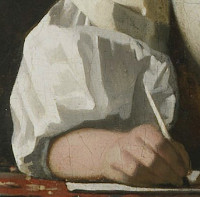
The simplicity in the mimetic rendering of the present work has led some critics to speculate that it was unfinished when Vermeer set asside his brushes. Nonetheless, it compares quite well with the artist's late style which tends towards generalized, abstracted forms and broken tones instead of descriptive detail and continuous modeling. Intriguingly, some 20th-century abstract artists lauded Vermeer, viewing him as an early advocate for the formalist art-for-art's-sake principle. His prowess in transforming observed reality into abstract pictorial elements is subtley achieved that it often goes unnoticed. For instance, when the billowing starch-white sleeves are viewed in isolation, their form becomes almost unrecognizable.
Humans have always had an inclination towards abstraction. Though it's challenging to pin down the exact reasoning, it's widely believed that the human mind organizes shapes to simplify recognition and recall. Essentially, abstraction mirrors our cognitive processes. Our minds instinctively simplify complex visual stimuli into more regular, symmetrical geometrical shapes.
For artists, abstraction isn't just about recognition—it's a conscious tool to highlight the facets of reality they find most compelling to convey.
Linear perspective in Vermeer's art
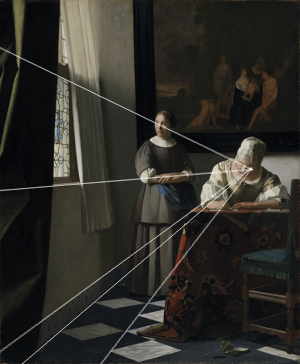
Vermeer's exceptional talent lies in his innate ability to intertwine painting technique, compositional design and often, linear perspective, all while aligning with the theme of his work. Remarkably, an accomplishment never achieved by compromising naturalism.
Linear perspective plays a crucial role in realist art, lending a coherent sense of depth and creating the illusion that objects occupy varying positions and distances from the viewer. Within this system, all lines that run parallel to the viewer's line of sight converge at a single point on the horizon, known as the vanishing point. This point directly opposes the viewer.
When examining the orthogonals of the current piece's perspectival system, they converge at the right eye of the seated mistress, revealing that Vermeer positioned himself directly in front of her while painting, aligning his eye level with hers. As a result, while the maid occupies the painting's geometrical center, the perspective ingeniously guides the viewer's focus to the mistress, the emotional core of the painting.
Consequentially, even though the maid is placed at the geometrical center of the painting, the perspectival system leads the viewer's eye to the mistress, the expressive heart of the painting.
Jacobus Vrel: an illustrious dilletante or precursor of Vrrmeer?

Woman Leaning out of a Window
Jacobus Vrel
1654
Oil on panel, 66.5 × 47.4 cm
Kunsthistorisches Museum, Vienna
Among the few artists who painted multiple versions of interiors with figures gazing out of windows, the enigmatic Jacobus Vrel stands distinctively. Art historians have always grappled with the artistic relationship between Vermeer and Vrel, who, for years, occupied the lower echelons of artistic hierarchy. Despite the undeniable allure of his images, Vrel appears to have been self-taught, as his works exhibit no signs of formal training in anatomy or, more notably, linear perspective. This lack is especially evident in his charming yet amateurishly crafted street scenes.
To unravel the enigma of Jacobus Vrel and reposition him within the golden age of Dutch art, an international research initiative commenced in 2018. However, exhaustive scrutiny of available archives did not yield details about Vrel's birthplace, demise, or specific activities. But a breakthrough came via dendrochronological analyses, which date the wooden panels of the artworks. This examination revealed that Vrel began painting his cityscapes around 1635 and his interiors around 1650. Thus, contrary to popular belief, he wasn't emulating Vermeer but preceded him, at least chronologically. It remains highly speculative whether Vermeer ever encountered Vrel's pieces or drew inspiration from them.
Vrel's Woman Leaning out of the Window, depicted in 1654, aligns with Vermeer's mature production. His tranquil interiors has prompted numerous comparisons to Vermeer's Little Street. By the late eighteenth century, Vrel's works began appearing under Vermeer's moniker in inventories and auction ledgers. Intriguingly, Théophile Thoré, the French art critic hailed for resurrecting interest in Vermeer, possessed Vrel works previously ascribed to Vermeer. When Thoré composed his seminal Vermeer article in 1866, he spotlighted it with a title vignette, a detail from a Vrel painting. This choice suggests Thoré perceived the motif of a woman glimpsed in a doorway as quintessentially Vermeer.
The maid & mistress: a divided relationship
Vermeer's paintings, while appearing as simple portrayals of reality, are intricate orchestrations of theme and visual language. In this piece, the seamless fusion of reality and artistry elevates both elements, particularly highlighting the nuanced relationship between the mistress and her maid— two figures from divergent social strata. This dynamic seems to have captivated Vermeer, prompting him to explore it three times.
Drawing a parallel between The Love Letter and this artwork offers insights. In both, the maid stands behind her seated mistress, who is depicted lower in the composition despite her higher social rank. However, this structural similarity belies the contrasting emotions conveyed.
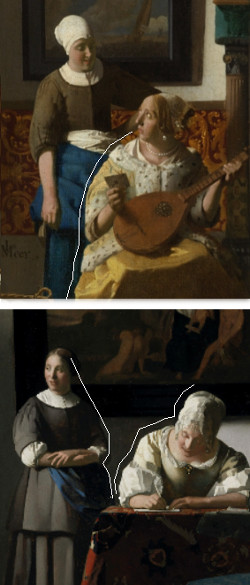
In The Love Letter, direct eye contact links the two women, suggesting a subtle tension. The maid's head inclines towards her mistress in a seemingly casual stance, while the latter, with an upward tilt of her head, seeks clues in the maid's expression—hinting that the maid might know more about the letter's contents. This relational depth is underscored by their intertwined silhouettes, their connection further emphasized by the mistress's gesture of momentarily suspending the unopened letter.
Conversely, the present work speaks to separation. The two women are oriented differently; the maid's gaze is directed out the window, perhaps signaling a desire to detach from the unsettling atmosphere, while her mistress appears engrossed in the emotional aftermath of a letter carelessly tossed aside. The maid's crossed arms suggest a guarded disposition, and despite their physical closeness—akin to the women in The Love Letter—their outlines come close but remain distinct, highlighting the gap both in their spatial and emotional realms. A similar artistic device can be seen in Vermeer's earlier Officer and Laughing Girl.
Walking into Vermeer's paintings: houding
The distance that separates 21st-century viewers from Vermeer's painting encompasses not only their symbolic interpretations but also the artist's formal aesthetic intentions. As scholar Paul Taylor notes, the idea of pictorial balance, a prime value attributed to Vermeer's art by contemporary critics, is absent in 17th-century art literature. Similarly, the term "hauding," or "houding," crucial for art writers of that era, remains obscure to today's audience and is scarcely grasped by experts. Taylor states, "Considering the emphasis on houding in theoretical texts, it seems plausible that the concept was frequently utilized in Dutch ateliers. The mere adoption of the word as an artistic term suggests its widespread significance. For a term to be integrated into a language, a significant number of users must find it relevant."
Willem Goeree, in his 1668 work Inleyding tot d'Algemeene Teykenkonst, expressed that houding "is among the most fundamental aspects of Drawing or Painting... nothing in the entirety of art is more counterintuitive than to position things without it." This concept was foundational for artists and art theorists like Gérard de Lairesse and Joachim von Sandrart.
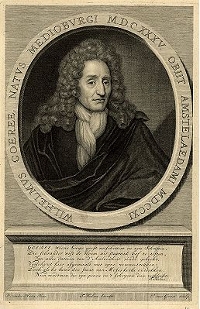
Willem Goeree
Further, Goeree stated that when houding is absent, "objects seem entwined, cluttered, or jumbled," and it's the very element "that enables everything in a Drawing or Painting to emerge and recede, positioning everything from the closest to the most central, and thereafter to the furthest, in its distinct place." It doesn't appear "closer or more distant, brighter or dimmer than its actual proximity or remoteness allows; setting each element distinctly apart from its neighboring objects."
Thus, houding appears to refer to the harmonious juxtaposition of contrasting pictorial elements (light vs. dark, intense vs. muted colors) to craft a credible illusion of three-dimensional space. Achieving correct houding prevents a painting from appearing "like a chessboard," as Dutch painter and theorist Samuel van Hoogstraten described. If houding is realized, the viewer senses that the artwork is "accessible by foot," meaning he could traverse the depicted space.
In this present work, the space is sensed as so tangible that the viewer might believe he could step into it. Nonetheless, any interpretation of Vermeer's piece through the lens of houding remains conjectural. It's pivotal for modern museum-goers to recognize that although Vermeer's illusions seem transparent to us, they embody layers more intricate than we surmise.
Painting lessons from the great Leonardo?
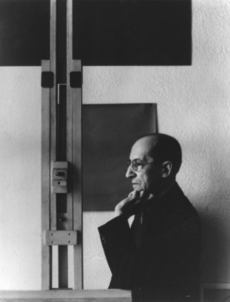
Early in his career, Vermeer demonstrated a preference for positioning his figures against light backgrounds. This was a departure from the norm, as most Dutch painters of the time opted for dark backdrops. While it's possible Vermeer came to this conclusion on his own, he might have been influenced by Leonardo da Vinci. Leonardo once observed, "objects placed against a light background will naturally appear detached from that background." Additionally, in the current piece and others, Vermeer utilized a technique reminiscent of the lighting contrapposto that Leonardo advocated to enhance the three-dimensionality of forms. Specifically, Leonardo advised to "put the light side against a dark background, and the dark side against the light background."
In the present work, the light side of the seated mistress's head and bodice sharply contrasts with the rich hues of the ebony frame and shadows. In contrast, her shadowed side is juxtaposed with a brightly lit wall passage. This trick is so subtly contrived that most viewers don't realize the wall's intense illumination is improbable given its distance from the light source.
This technique recalls a photographic self-portrait by Piet Mondriaan—a connection highlighted by art historian Robert Wald. Mondriaan, a Dutch abstract painter, is believed to have admired Vermeer's exceptional design sense.

